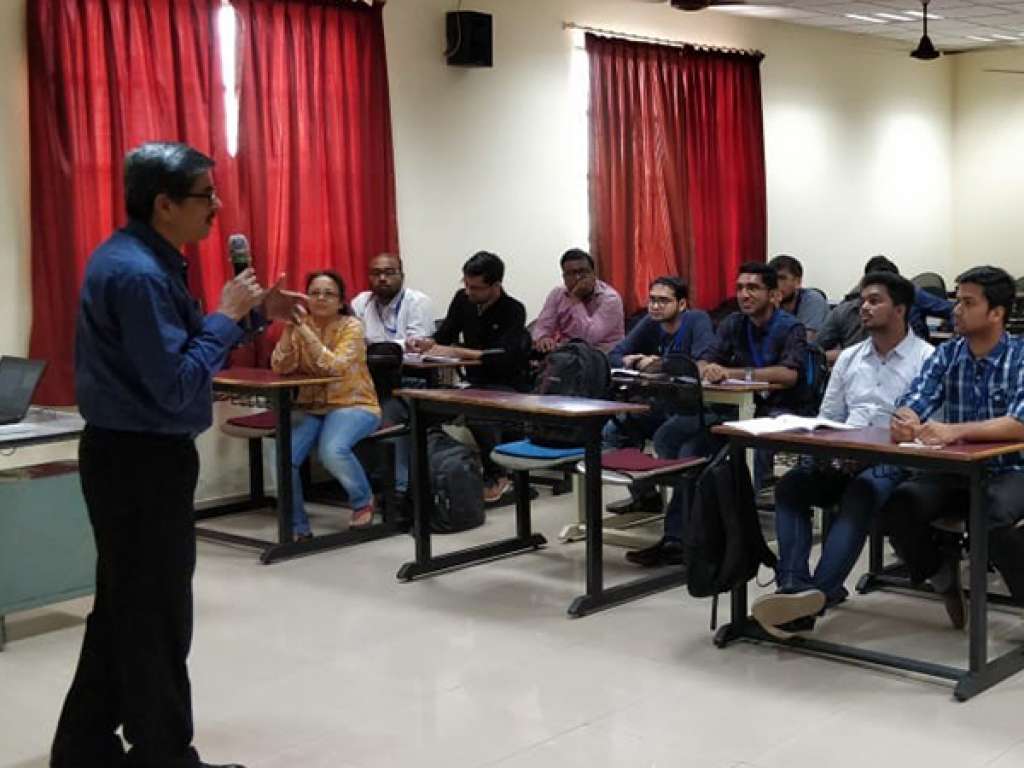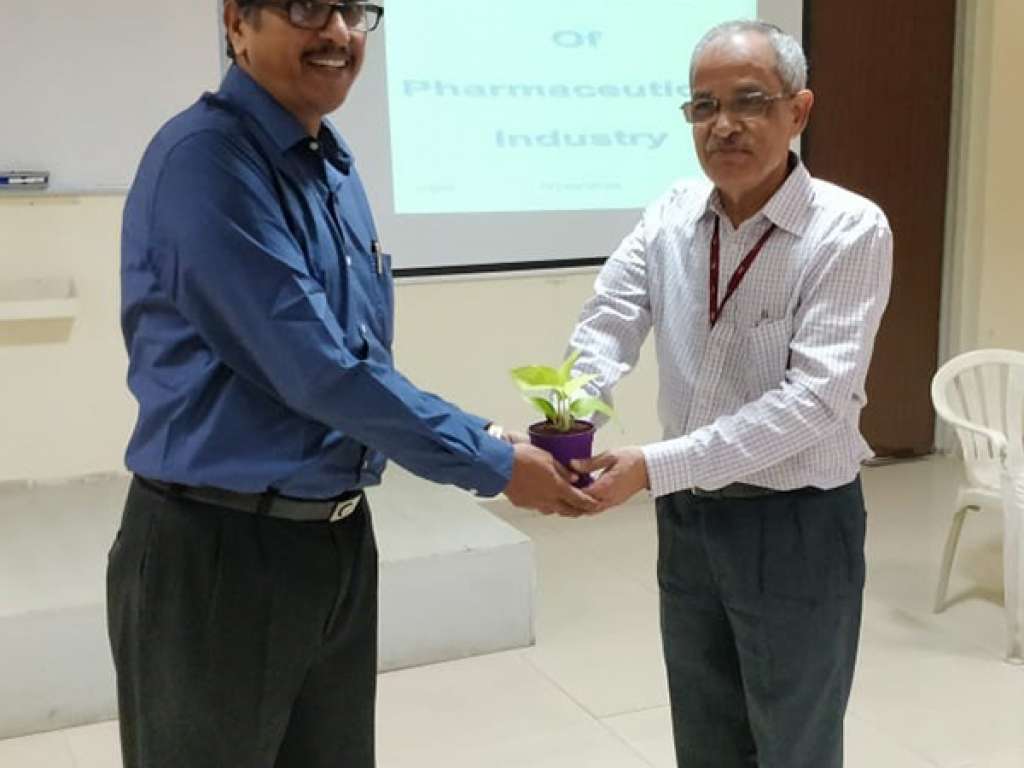Supply chain management is the core of all business activities. In order to sustain this competitive world, Dr. Arloph gave us a brief idea about supply chain management practices in the pharma industry. Having a work experience of 33 years in the pharma industry, Dr. Arloph has worked in various companies such as Cipla, Shalina labs, Flammingo, Koran labs, Mycare labs, etc.
Major discussion topics
• Various supply chain management practices of the pharma industry
• Global Scenario of Pharma. Industry• Indian Pharmaceutical Industry.
• Indian versus China – Two Asian Giants
• Pharma. Supply Chain & its Challenges
Introduction
Supply chain management is essential in every industry for carrying out the business processes of an organization effectively and efficiently. It varies from industry to industry and Dr. Arloph showed us how supply chain management practices are carried out in the pharma industry.
Supply chain management practices of the pharma industry World competitiveness report = Competitive assets × Competitive process Benchmarking at pharma industryAccepting that someone is doing greater than you and being wise enough to learn to match with them and even surpass them at it.
• Old Paradigm: Steal shamelessly New Paradigm: Adapt HonorablyGlobal scenario of the pharma industry
Globally, Pharma Industry was $ 1200 Billion in 2018. Top 10 global pharma companies in2018 in USD:
1. Pfizer
2. Roche
3. Merck
4. Johnson & Johnson
5. Novartis
6. Sanofi (Astra Zeneca)
7. GSK
8. Abbvie
9. Amgen
10.Gilead Sci.
By the year 2023, its net worth will become $ 1500 bn. R& D spend by pharma companies is about $ 149 bn (15%). Thus, from the manufacturing of small to large scale medicines, pharma has evolved to be one of the emerging industries in today’s era.
Every pharma industry while manufacturing a particular medicine requires a type of API called Active Pharmaceutical Ingredient which forms the basis of every medicine. There are various type of API which requires a different amount of temperature and different storage capacity and structured accordingly. Thereafter, the pricing of medicine is an important parameter to be considered when delivering medicines across the globe.
Indian pharma industry
Coming to India, it has emerged as the world’s 3rd largest market by Volume & 14th by Value in pharmaceuticals. It accounts for 3.5 % of the Global pharma industry by value and 10% in terms of volume. Top 10 Co’s –
1. Sun
2. Lupin
3. DRL
4. Cipla
5. Aurobindo’
6. Zydus Cadila
7. Glenmark
8. Torrent
9. Divis
10.Biocon.
There are more than 45000 manufacturing units in India. Total R & D spend by Indian Pharma companies is about 8-11% /annum .75 % of India’s demand is met by local manufacturing because of low prices for medicines and cultures of Indian people on compromising sometimes over quality of the drug manufactured.
India has a strong financial position and is having a good manufacturing base, hence various IT companies also were developed along with the pharma industry. In case of China, it lacks such manufacturing base but since in China the electricity cost is low, labour charge is also40% lower and there is more favorable labour policy for labour so somewhere there are some loop holes which restricts Indian pharmaceutical industry in developing to extent but India can minimize this loop holes by identifying the gaps and improvising the existing processes.
Supply chain process of pharma industry –
Form Dev: 18-24 months, 24 -36 monthsDemand Forecasting: 2 days
Production Planning: 3 daysMaterial req. Planning: 1 day
Procurement: 3-5 days PO, 21-30 days
Demand feedback Port C&F Shipping liner CWH (Exports)
CWH (Domestic)Factory
In-house or Contract: Mfg.(15-45 days)
Retailer Stock list Wholesaler Distributor
As medicines have a shelf life and perishable, it needs to be set at certain temperatures which vary depending upon the type of ingredients and utility requirement. Then after providing such conditions to medicines, they are transported to various countries. There are various containers having different sizes which are measured in the unit as CBM. An average CBM is about 26 CBM. There are three types of shipments such as deep freeze container shipment requiring a temperature of -2 to 0 degree Celsius, some are freeze containers requiring temperature between 2 to 8 degrees Celsius and some require normal room temperature. So every company tries to reduce transportation costs by utilizing the optimum space as per the capacity which will help the company to achieve maximum profit.
Challenges of the pharma industry
While formulating a particular drug it takes around 18 to 24 months for formulation. Sometimes due to faulty packaging or high price for products distributors can’t afford to buy such medicines, and at times the transportation cost of the product becomes too high.
Planning
• Domestic market (Made to stock) – 1 to 6-month forecast is made• Export market (Made to order) – 1 to 2-month forecast is madeStock keeping unit planning
As per the season, the plans are devised and accordingly the manufacturing is done on the basis of Made to order. Quality check lead time is measured and the transport/freight and lead time are calculated. Thus the reliability of suppliers is determined.
Procurement
There are various type of procurement of various materials according to input material and output materials as follows –
Inventory Norms (Input Materials)
Raw Material
• A – Class 15-30 days
• B – Class 30-60 days
• C – Class 90 days (4 times a year)
Inventory Norms (Output Materials)
Domestic Fast – 75 days Normal – 45 days Slow -30 days
Production
There are multiple batch sizes for Small & Big Orders. They also have backup for the production of the top 10 Brands. The capability of production is increased by multiple parts change / Tooling for M/c’s. Accordingly, the timely decision of Technical / QA aspects is taken.
Distribution
The main aim of the industry is to distribute in a proper way to reduce cost in overall transport for carrying out finished goods and materials to various locations. Reducing freight timing and transport costs and achieving maximum benefit from the production yield.
Outsourcing
Deciding what to outsource according to customer needs and wants and outsourcing of right products and delivering to the designated location at right time and right cost. In this way, the whole process from manufacturing to outsourcing of pharma products is carried out.
Altogether it was a learning session which focused on Supply chain of Pharma Industry.




